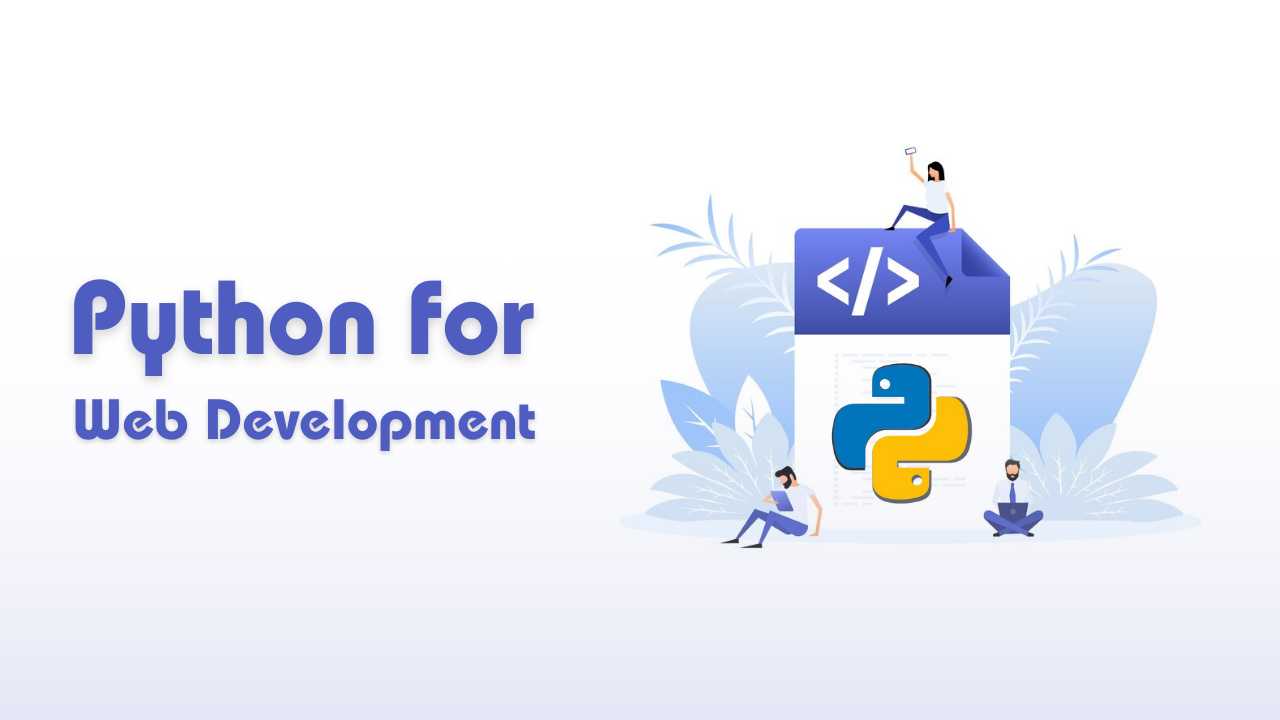Notifications

11 minutes, 17 seconds
-158 Views 0 Comments 0 Likes 0 Reviews

One word that defines Python is readable, clear, and easy-to-understand syntax, which is easier for beginners and experienced programmers to comprehend.
What compels someone to create a new programming language in a world already brimming with them?
Guido van Rossum wanted something simple, readable, and versatile. But that didn’t stop there. Guido envisioned a language that wasn’t tied to one domain (System scripting to web development, from automation scripts to AI models)
Python is the katana for slicing through web complexities, AI quandaries, and data jungles. But why is Python the go-to weapon of choice among top web development companies?
Why do Python development companies swear by it? Is it just because of the syntax? Or is Python the people’s champion for a deeper reason?
Python reads like English. This simplicity doesn’t just make life easier for developers; it makes the codebase maintainable for teams, which is why it's embraced by top web development companies. You won’t need a Rosetta Stone to read someone else’s code. Django and Flask are the Batman and Robin of Python web development. Django helps you build full-fledged applications rapidly. Flask is minimalistic and flexible, perfect for microservices or MVPs.
Instagram uses Django for its backend because Python allows them to scale features quickly without compromising performance.
From authentication to image manipulation, Python’s libraries reduce the need to reinvent the wheel. Who needs to reinvent fire when you’ve got a Zippo? APIs, cloud deployments, and microservices architectures? Python’s got you. It's highly integrative with modern DevOps tools and cloud platforms like AWS and Azure.
Isn't it paradoxical that the same language powering web backends is also revolutionizing artificial intelligence?
Python’s grip on the data science world is ferocious. Thanks to libraries like NumPy, Pandas, TensorFlow, and Scikit-learn, Python has become synonymous with modern data manipulation and machine learning.
Spotify uses Python for music recommendations, analysing vast amounts of user data to generate tailored playlists.
Zomato’s intelligent food recommendations use Python and libraries like Scikit-learn and TensorFlow to build machine learning models that analyse user behaviour, cuisine preferences, time of day, and even weather to recommend dishes users are likely to crave next. This AI-powered insight is what makes users think, "How did it know I wanted sushi at 8 PM on a rainy Thursday?"
Now if you want to replicate the same magic using PHP, you’d be duct-taping external tools, writing clunky scripts, and probably pulling your hair out over performance bottlenecks.
Moral of the story? If your app needs brains, not just a backbone, Python is your go-to ally.
So, if you're a startup hoping to deploy a smart app—maybe one that predicts pizza cravings before they hit—Python is your psychic friend.
Can a language that started off parsing ABC scripts hold its ground in 2028’s world of AI-powered apps, low-code platforms, and in-browser neural networks? Let’s explore what’s actually happening instead of speculating blindly:
Why should machine learning always run on the server?
WebAssembly runs high-performance code in the browser. Python’s growing compatibility with WASM is reshaping client-side computing, allowing developers to embed Python-powered AI directly into web interfaces.
Pyodide is already being used in tools like JupyterLite—a full Python-powered notebook that runs entirely in the browser, opening the door for AI-enhanced web forms, calculators, and dashboards—all without hitting a server.
So, the next time you adjust a slider in a data dashboard, the calculations might be happening right in your browser due to Python and WASM.
Should your web app wait for user clicks, or predict them?
With the rise of AI and behavioural analytics, Python development companies are leveraging Python’s ML ecosystem (TensorFlow, PyTorch, FastAPI) to build intelligent web apps that adjust content, layout, or offers in real time.
Airbnb uses Python extensively for machine learning models that determine dynamic pricing, fraud detection, and even personalised search rankings. While JavaScript handles the UI, Python orchestrates the brains behind the decisions.
If coding is eating the world, what’s feeding the people who can’t code?
Low-code and no-code tools are booming, but they’re only as smart as the logic beneath them. Increasingly, platforms like Retool, Anvil, and Bubble are integrating Python scripts to support advanced backend logic.
Retool, a leading low-code platform, allows developers to inject Python to perform API integrations, conditional logic, and automated workflows that visual tools alone can’t handle. It's a hybrid future—drag, drop, and deploy...with Python filling the gaps.
After discussing so much, do you still think JavaScript rules web development? Try this:
Now try it again with Python and frameworks like Django, FastAPI, and Scikit-learn. Which one lets you sleep at night?
Python may not run your fridge (yet), but it’s already running your voice assistant, your shopping recommendations, and your automated business dashboards.
Is that future-proof enough for you?
Have you ever peeked behind the digital curtain of a unicorn startup and wondered what’s powering its meteoric rise? Is it just luck, funding, or a slick UI? Or could it be that a Python development company is pulling the strings behind the scenes?
Could it be Python’s uncanny flexibility? After all, startups must pivot on a dime, scale without breaking, and embed intelligent features like chatbots, real-time analytics, or image recognition without rewriting their entire codebase. Doesn’t Python make that possible with elegance?
Why are Python development companies thriving across sectors like fintech, healthcare, ecommerce, and edtech? Might it be because these industries crave one thing—versatility, and Python delivers it in spades?
Top web development companies know that when clients demand agile solutions, fast time-to-market, and integration with cutting-edge AI tools, Python answers without flinching.
And let’s not forget Python’s origin. Did you know it started as a hobby project focused on simplicity? Could anyone have predicted that it would grow into the very backbone of modern web backends, AI-driven platforms, and data-intensive systems?
So, what does this mean for you?
Whether you're a startup founder navigating chaos, a CTO seeking scalable stability, or a developer chasing future-proof skills, partnering with Python development companies is more than a smart move—it’s a strategic one. And if you want reliability, innovation, and speed wrapped in clean syntax, the top web development companies already have Python-coded blueprints ready for launch.
Why bet on yesterday’s tools when Python’s flying past the future—on Django wings and TensorFlow jetpacks?
Still thinking about it?
Just remember—the web waits for no one. But Python? It’s already there, building it.

